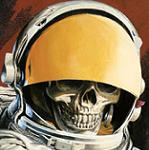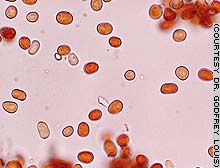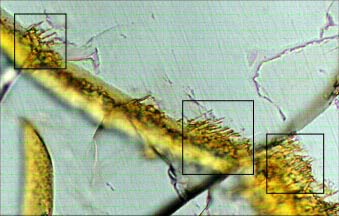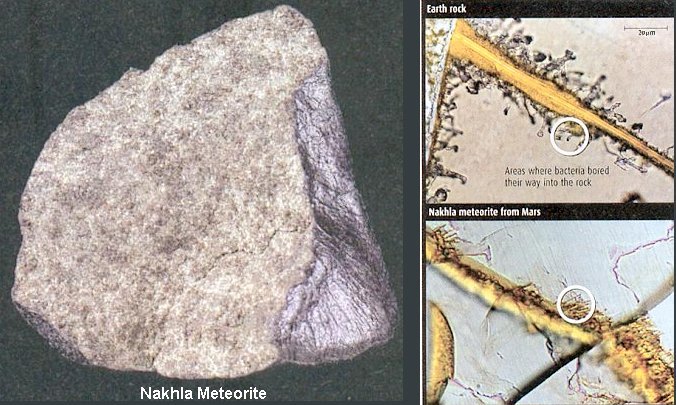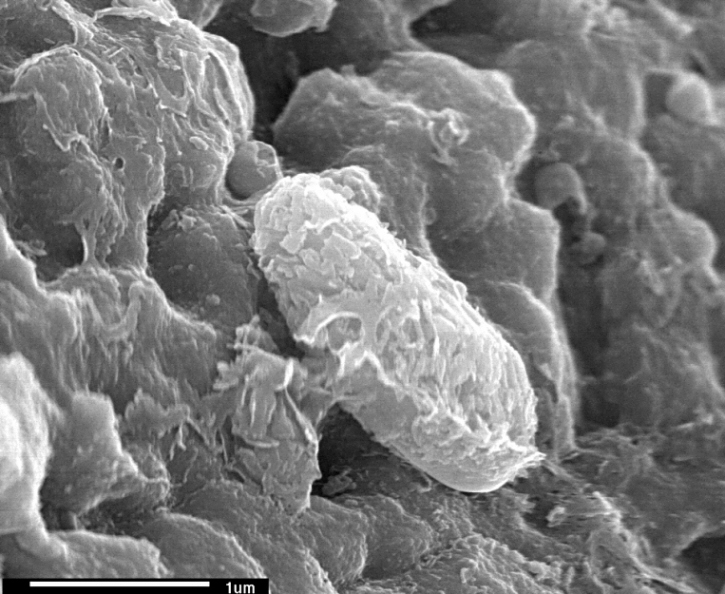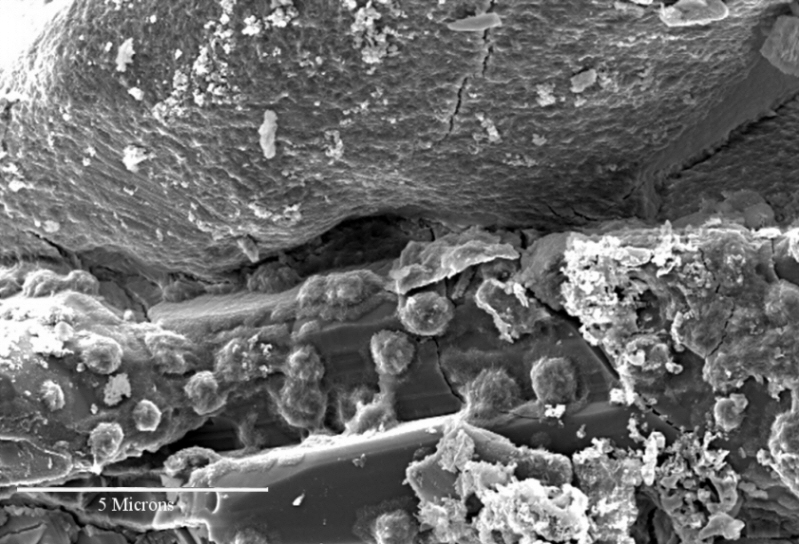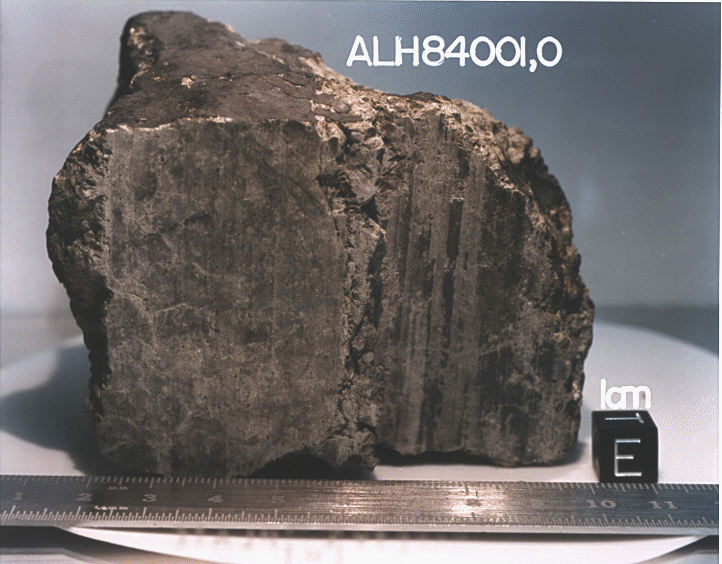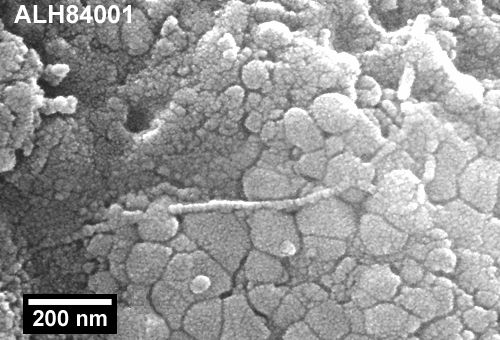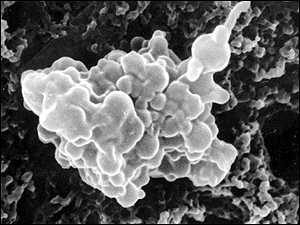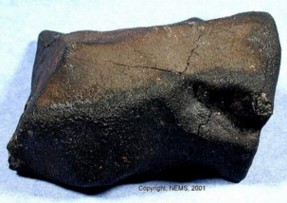|
The Enigmas on Mars |
|||||
Mike Singh's Collection
|
|||||
Originally posted by mikesingh at ATS Post ID4274058 “I think the universe must be teeming with sentient life... sooner or later we will make contact with extra-terrestrial intelligence.” - Prof Wickramasinghe "Humans will never be able to detect extra terrestrial life forms as long as they cling to present scientific paradigms and beliefs." - Kaalchakra I would like to clarify that this is not about advanced ETs civilizations. It’s not about their purported space ships capable of interstellar voyages through ‘worm holes’ or even interdimensional travel and so on. It’s about evidence of fundamental extra terrestrial life forms that have been discovered and studied scientifically. The evidence that life may be universal is being presented here in brief. But could this be construed as incontrovertible evidence or final proof of the reality of extra terrestrial life? It could be mentioned here in passing that what we construe as the basic requirements of ‘life’ may not be so. Much of such alien ‘life’ may be beyond our scientific templates and knowledge on which we base our deductions. Let’s take a look at what we’ve found and the results after scientific analyses. The first is, as usual, from the LANL archives. The Mysterious Red Cells Of Kerala: Aliens Life Forms?
As bizarre as it may seem, the sample jars containing cloudy, reddish rainwater in Godfrey Louis's laboratory in southern India may hold... aliens! In 2006, Dr Godfrey Louis, a solid-state physicist at Mahatma Gandhi University, published a paper in the prestigious peer-reviewed journal Astrophysics and Space Science in which he hypothesizes that the samples taken from the mysterious blood-colored showers that fell across the Indian state of Kerala in the summer of 2001 contain microbes from outer space. Specifically, Louis has isolated strange, thick-walled, red-tinted cell-like structures about 10 microns in size. However, though dozens of his experiments suggest that the particles may lack DNA yet they reproduce plentifully, even in water superheated to nearly 600 deg F. (The known upper limit for life in water is about 250 deg F). So how does Louis go about explaining this phenomenon? He speculates that the particles could be extraterrestrial bacteria adapted to the harsh conditions of space and that the microbes hitched a ride on a comet or meteorite that later broke apart in the upper atmosphere and mixed with rain clouds above India. If his theory proves correct, the cells would be the first confirmed evidence of alien life and, as such, could yield new clues to the origins of life on Earth. "Are these cell like particles a kind of alternate life from space? If the red rain particles are biological cells and are of cometary origin, then this phenomena can be a case of cometary panspermia (Hoyle & Wickramasinghe, 1999) were comets can breed microorganisms in their radiogenically heated interiors and can act as vehicles for spreading life in the universe." Strangely, this episode is being under-reported. A massive investigation into this "red rain" will probably settle the question whether extraterrestrial life exists, but why is this not happening? Link to the papers of Dr Godfrey Louis which
are available in the Los
Alamos National Laboratory (LANL) archives
Over several months, Dr. Louis began experimenting with different temperatures to see if the cells would respond. As the temperature rose, he saw more ... newswire.pro/red-rain.htm Red Rain of Kerala, India Video
|
|||||
|
..
According to a study published in Scientific American, the Nakhla meteorite that fell in Egypt nearly 95 years ago may offer clues as to the search for possible extra terrestrial life. Researchers studying the meteorite that originated from Mars found a series of microscopic tunnels within the object that mimic the size, shape and distribution to tracks left on Earth rocks by the feeding frenzy of bacteria. The discovery of the tiny burrows adds intrigue to the search for life beyond Earth. However, no DNA could be extracted from the meteorite, so it's not known if the tunnels are of biological origin. But the research findings of a team of scientists led by Martin Fisk, a professor of marine geology in the College of Oceanic and Atmospheric Sciences at Oregon State University), published in the February issue of the bimonthly journal, Astrobiology, insists the lack of DNA does not derail the prospect. "Subsequently, scientists had decided these structures most likely represent contamination from Earth-dwelling biota. But now the BBC is reporting that researchers from the U.K. have cracked open the meteorite from Egypt and found material that resembles the filling left behind by microbes in cracks on the bottoms of the ocean. Solid veins of such “carbonaceous material” were found inside the meteorite, quashing objections that it could represent contamination from contact with earth, the researchers claim. And according to the BBC, previous scientists who examined the rock found that more than 75 percent of the meteorite's carbon is not one of the most common isotopes of carbon--carbon-14. That means it could be the relic of the action of alien microbes toiling in unimagined seas on ancient Mars." |
|||||
Evidence for Microbial Life in Martian Meteorite Nakhla Nakhla is a member of the Nakhlite group of achondrites and is composed mosly of clinopyroxene with minor amounts of feldspar, sulfides and oxides. Nakhla has a crystallization age of 1.3 Gyr and contains clay- filled cracks of Martian origin. Light microscope images reveal rounded micrometer sized structures embedded within the clay-filled cracks. On closer examination using SEM, these features consist of 0.5-2 micron-sized spheres with irregular surfaces. They occur in distinct cluster-like distributions within the clay (see images below). These spheres and ovoids in the Nakhla meteorite are simular to the fossils of terrestrial coccoid bacteria. However, it is important to emphasize that spherical and/or ovoid morphology alone are not indicative of biogenic activity.
..
..
Closeup [field emission scanning electron microscope (FE-SEM)] of a triplet structure within the martian meteorite Nakhla with a 20 nanometer wide filament extending from the apex of a terminal sphere. The spheres appear to be partially submerged within biofilm or a later generation of "iddingsite" clay. - SOURCE: NASA |
|||||
Some of the first possible extra terrestrial proofs of life came in 1996 from a meteorite found in Antarctica. Ejected from the surface of Mars it came to rest on Earth, bearing odd, microscopic structures that resemble fossilized remnants of bacteria. "The indication of life hinges on three important pieces of evidence, all discovered within mineralized fractures in the meteorite in close proximity to each other. One is the discovery of abundant polycyclic aromatic hydrocarbons (PAHs) on the fracture surfaces. These are a family of complex organic molecules which are commonly found on dust grains and certain types of meteorites in outer space, presumably formed by non-biological chemical reactions." "However, when micro-organisms die they break down into PAHs as well. [b]The mixture of PAHs found on ALH84001 is very different from that found on dust grains and other meteorites, suggesting the possibility of a biological origin. Thousands of different types of PAHs are found all over the Earth, but those in ALH84001 do not appear to be contaminants which have leaked into the meteorite." Further, high-resolution scanning with electron microscopes had revealed the presence of tiny "ovoids" which may actually be fossil remnants of tiny bacteria that are 100 times smaller than any bacteria microfossils found on Earth!
..
..
..
Biogenic-looking features in ALH84001 Martian meteorite (Above) and similar features in the Columbia River Basalts (See Here). The features in the Columbia River basalt samples were produced when rock chips were submersed in bacteria-containing well-water from the basalt formations in a culturing laboratory experiment. Identical control experiments using sterilized water did not produce any similar features. The similarity of the ALH84001 features to the Columbia River biogenic features supports our interpretation that the features in ALH84001 were formed by bacteria. - SOURCE: NASA AMES JSC |
|||||
|
..
In 2001, a team of international researchers found what could be the first proof of life beyond our planet, in the form of clumps of extraterrestrial bacteria in the Earth's upper atmosphere! Although the ‘bugs’ from space are similar to bacteria on Earth, the scientists said the living cells found in samples of air from the edge of the planet's atmosphere are [b]too far away to have come from Earth!! According to Professor Chandra Wickramasinghe, an astronomer at Cardiff University in Wales… “There is now unambiguous evidence for the presence of clumps of living cells in air samples from as high as 41 kilometers (25 miles), well above the local tropopause, above which no air from lower down would normally be transported.'' He presented the findings to a meeting of the International Society of Optical Engineering in San Diego, California. Professor David Lloyd, a microbiologist at Cardiff University who examined the space bugs, says, “The most likely possibility is that the bacteria have arrived from another planet. I'd like to think that, at any rate. It's the first pointer that it is possible to get evidence that there is life on other planets.'' "When you look at the detailed nature of life in terms of molecular complexity it seems extremely unreasonable to suppose that on this tiny speck of dust - which is all that the Earth is - the most complex physical system originated.” - Prof Wickramasinghe |
|||||
| Space bugs?
Other scientists think they probably come from Earth The claim that alien bacteria had been found high up in the Earth's atmosphere was greeted with a large degree of scepticism on Tuesday. "It's exceedingly unlikely
that they could have been lifted up from the ground in the quantity that
we find."
Professor Chandra Wickramasinghe, from Cardiff University, UK, told a weekend conference that a balloon flight at an altitude of 41 kilometres had recovered clumps of microbes that most probably had their origin in outer space. "They look like terrestrial cells but it's exceedingly unlikely that they could have been lifted up from the ground in the quantity that we find - something like 100 bacteria per litre of air," Professor Wickramasinghe said. But scientists working in the field of astrobiology - the study of life in the Universe - said they had yet to be convinced by the Cardiff evidence. Clusters of cells Professor Wickramasinghe outlined the findings of joint UK/Indian research at a meeting of the International Society for Optical Engineering in San Diego, California, US. Balloons were sent up from a research facility in Hyderabad to collect samples of air at high altitudes. The samples were then sent to Cardiff where microbiologists were able to isolate clusters of cells. "My colleagues have identified these as living cells because they take up a certain dye and show up as a fluorescent spot on the microscope," Professor Wickramasinghe said. "But the team haven't yet been able to culture them and that gives added confidence that the microbes are something alien. Because, if they were ordinary run-of-the-mill bacterial contaminants, they would be very easy to culture." The professor has long argued that comets and space dust probably brought the seeds of life to Earth. He and the eminent astronomer Sir Fred Hoyle put forward the so-called Panspermia Theory, which suggests that life, or the building blocks of life, could be carried to planets by comets or drifting interstellar dust particles. Need for publication However, UK scientists interested in the search for extraterrestrial life said they would need to see more hard evidence from the experiments before they could accept the analysis. Dr Alan Penny, an astronomer from the Rutherford Appleton Laboratory, and a member of the UK Astrobiology Forum and Network, told the BBC that "there were unresolved questions about contamination in the experiments". "I think Chandra is being a bit optimistic," he added. Experimental error was also highlighted as a potential problem by Professor John Zarnecki, from the Open University, another network member. "I would like to be positive but the burning question for me is: how do we know there is no contamination? Let's see the work published. Let's see it peer reviewed," he told BBC News Online. And Professor George Tranter, a biochemist from Imperial College, said: "We need to see the evidence. They have long-standing theories, which they're looking to find evidence to support." SOURCE: BBC News Online |
|||||
| Methane in the Martian atmosphere
hints at microbial metabolism
In 2004 three groups - using telescopes on Earth and the European Space Agency's Mars Express orbiting space probe - independently turned up evidence of methane in the atmosphere. [b]Nearly all methane in our own atmosphere is produced by bacteria and other life. [/b] Could this mean that the methane on Mars is being produced by organic life? Most likely. More Here… Amino Acids And The Murray Meteorite
The Murray Meteorite This meteorite is a Type II carbonaceous chondrite that fell near Murray, Kentucky, in 1950. Its analysis by Melvin Calvin provided early support for the idea that prebiotic molecules can form in space. As many as 70 different kinds of amino acids have been found in the Murray meteorite "With the help of a detection technique known as gas chromatography-mass spectrometry, the researchers identified a number of so-called polyhydroxylated compounds, or polyols?including sugars, sugar alcohols and sugar acids?in extracts from the two meteorites.[b] Reassuringly, the fact that these sugar-related compounds display many of the characteristics of known extraterrestrial compounds speaks against the possibility of terrestrial contamination. Furthermore, the team's findings indicate that extraterrestrial processes can account for the sugars." These results suggest that these amino acids, are most likely extraterrestrial in origin. So what do you make of all this? Can life be abundant in the universe? Could we have originated from out there? Are we the aliens? Cheers! :D
|
|||||
References:
|
|||||
|
|
|||||
| FAIR USE NOTICE: This page contains copyrighted material the use of which has not been specifically authorized by the copyright owner. Pegasus Research Consortium distributes this material without profit to those who have expressed a prior interest in receiving the included information for research and educational purposes. We believe this constitutes a fair use of any such copyrighted material as provided for in 17 U.S.C § 107. If you wish to use copyrighted material from this site for purposes of your own that go beyond fair use, you must obtain permission from the copyright owner. |
